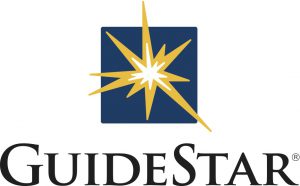Charitable Giving
Setting aside some money for charitable giving is an important part of every budget or spending plan. Charitable organizations are essential to helping people in need and cannot function without regular contributions from the public.
Types of Charitable Giving
Charitable giving has many forms, but the essential concept is that it is a donation where you do not expect a good or service in return. The main types of charitable giving include:
Religious Donations
Throughout history, most major religions required donations from all members of the congregation who could afford it. This was usually called a “tithe” that was 10% of that person’s income for the year. The church uses this tithe both to fund its operations, but also in “giving alms,” or to fund specific programs for the poor. This would include soup kitchens, homeless shelters, and other services.
In modern times, a strict 10% tithe is uncommon, but all churches receive donations from their congregations to fund their operations and charitable activities.

Non-Profit Organizations
There are tens of thousands of non-profit organizations in the United States alone. Non-profit organizations are organizationally structured similarly to a regular business, but the main objectives of the organization are charitable in nature. This means that instead of measuring the success of their operations by the dollar amount of profit, non-profits operate by running programs, each of which has its own measures of success.
Non-profits typically operate through “programs”, each will be based on a Program Logic Model, or PLM. A PLM is an outline of how a program is trying to address a specific problem, who the key stakeholders are, how this program will help solve this problem, and how success (or failure) should be measured.
For example, this lesson you are reading right now is included in part of the programming of many non-profit organizations that focus on improving financial literacy among high school and college students. As part of these organizations’ Program Logic Models, they would use information gathered from student feedback, performance on assessments (like the pop-quiz at the bottom of this lesson), and following up with students who have utilized this resource to measure how effective it was in improving financial literacy. Those non-profits can then use the data collected to talk to donors to secure funding to continue running their financial literacy program, fund improvements, or identify problems and change the program itself.

The “non-profit organization” is a term that can encompass everything from universities and private schools to international aid organizations to tiny committees that organize cultural festivals, and everything in between.
Individual Giving
The rise of crowdfunding websites, like GoFundMe, has opened the universe of charitable giving. Making it possible to give money to a specific person for a specific project. While this democratization of giving has been a blessing to many of the people it helps, it also has specific challenges compared to the other types of charitable giving.
Donations to a religious organization or a non-profit are usually tax-deductible. This means you can write these expenses off your taxes because the government believes these organizations are doing a “public good”. However, giving money to individuals through crowdfunding platforms is not tax-deductible, because the government has no oversight on who is getting this money or how it is spent.
There are some exceptions to this (like a crowdfunding campaign that directly benefits a non-profit’s programming), but giving money to a single individual, even for a charitable cause, has less accountability and fewer tax advantages than giving to a non-profit organization.
Choosing Your Charitable Donations
Starting with the tithe, most financial literacy experts estimate that most people should budget about 10% of their net annual income towards charitable giving. This amount is actually only around 2% of annual incomes. Partially because people do not give as much as they think they do, and partially because many people just do not follow a budget.
However much you decide to donate, there are a few metrics you can use when deciding which charitable donations to support.
Overhead Ratios
Overhead Ratios are how much an organization spends on its “general operating costs”, like fundraising expenses and the salaries of its management teams, versus “programming costs” or money that is directly spent on the programs the non-profit provides.
While this can be a useful tool, it can also be misleading. GuideStar, the largest database of information about non-profits in the United States, specifically campaigns against using overhead ratios as your sole metric for comparing non-profit organizations. Some reasons include that the cost of effective managers is extremely well spent and can make an organization far more effective by having good leadership. Many types of training and operating expenses related to program efficiency are sometimes categorized as “overhead”, and sometimes fundraising expenses are essential to growing the scope of the program itself.

These issues aside, you probably want to avoid non-profits that dedicate most of their income towards “overhead” expenses, as this can mean very little of your donation actually funds the programs you think you’re supporting.
Program Logic Model Evaluations
We mentioned the concept of a “PLM” for non-profit programming. PLMs are usually made public by non-profit organizations to show how their programs work and how effective they are, and what the non-profit is doing to make them even better.
Unlike the financial statements published by a publicly traded company for investors, PLM reports are not externally audited and can be subject to “spin” by the non-profit itself. This can mean it takes some savvy to understand how well the organization is REALLY doing to accomplish its mission versus what is being sugar-coated. As a donor you should be able to understand what their goals are, what they are doing to achieve them to ensure that it makes sense to you, and that it’s a program you truly want to fund.
Researching Charities
If you want to do your homework before giving to a charitable cause, here are a couple of resources to help you get started.
CharityNavigator.org
Charity Navigator seeks to be a comprehensive database of all non-profit organizations and does its best to provide “scores” on how accountable each organization is, how effective its programming is, and even a measure of its leadership and community impacts. This is an ambitious amount of information, which means that many smaller charities only have partial information (or may be missing from the list entirely). This means that Charity Navigator is an excellent choice if you want to donate to some specific type of cause but are not sure which charity to choose. However, it might not have all the information you need to do a deep dive on a specific charity you have already identified, especially if it’s small or local.

GuideStar.org

GuideStar is the largest database of non-profits in the United States, which includes a wealth of information on just about every organization from their current management team (and how much they are paid) to their recent tax filings (so you can see exactly how they spend their money), to overhead ratios, and much more. Because their scope is focused more on public records, like financial statements and tax filings, GuideStar is more comprehensive than Charity Navigator, but likely will not have as much information on things like program efficacy and profiles on the charity’s leadership.
If you want to dig down into the financial health of a charitable organization, GuideStar is the place to start.
IRS Tax Exempt Organization Search
The IRS also has public records for all non-profit organizations available as public records. The IRS search is the most comprehensive of the three resources listed here but is also the hardest for a beginner to navigate. This will mostly provide you with raw tax returns and some other basic financial data with absolutely no analysis on what it means. So if you are not comfortable sorting through opaque financial data, you will probably have a hard time finding what you are looking for.